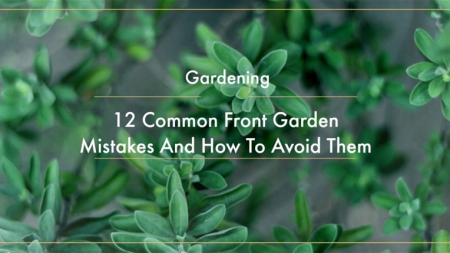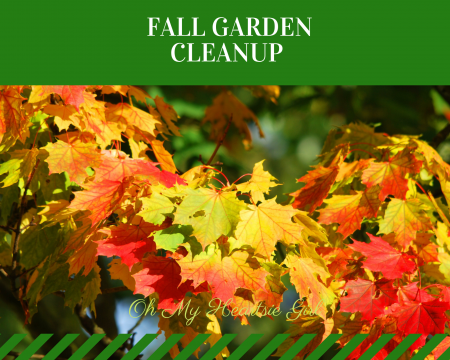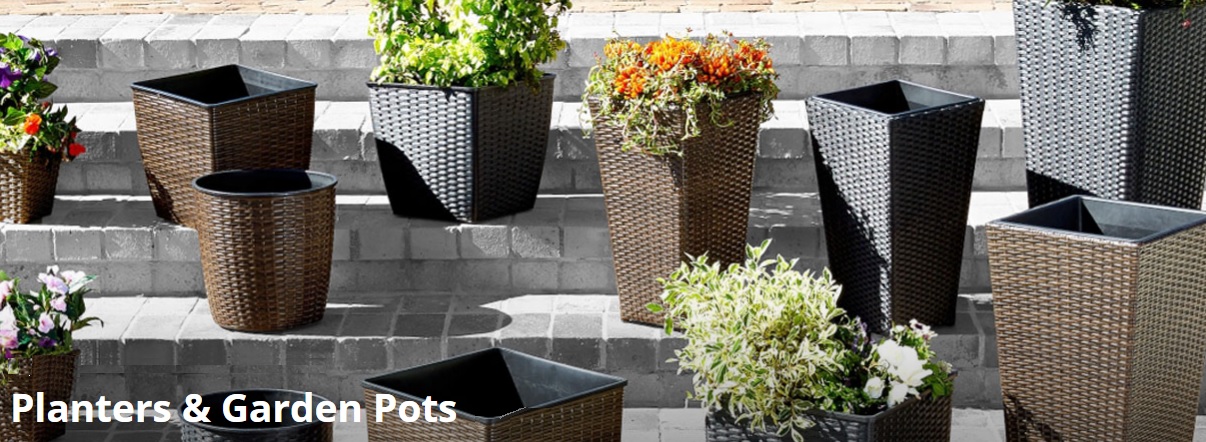Do the gardening is a common hobby of many people nowadays as it is a way to help them relax and get rid of the stress during a day. Therefore, in each house, people often design a small garden in front of their house to draw other’s attention whenever they call on the house. However, some people having mistakes with the design, the planning, the plant arrangement, etc., when creating this garden. Here are 12 common front garden mistakes that we can tackle.
- Choose The Plants
There are four seasons in a year so you should buy multiple plants which are suitable for each season. In case you use the seasonal plants, let’s imagine how your garden looks in other seasons during the year. The trees may be leafless, and the whole garden may be very bare. Moreover, if you plant a large number of trees while you do not have enough time to take care of them, they will narrow down the real space and make your garden look messy. Instead of that, using all season plants or the evergreen shrubs which can stand in any weather will be a smart choice as we will not have to spend much time on them. Besides, you need to choose the style of your garden as different style needs different flowers and trees.
- Light Outdoor
Regardless of which size your garden is, make sure to install the light in your garden. In the day, the sunshine can make your garden bright, but when the sun goes down, the light is your garden’s savior to let it shine in the dark. With the small garden, you only need a pair of lanterns to create the comfortable atmosphere to welcome the guest. In the case of the bigger size for the special events like holding a party or eating BBQ outside, you should more focus on your light system outdoor. However, it is of great importance that you avoid using harsh lights in order not to dazzle other’s vision. And don’t install the wires after planting as you may waste a lot of time digging up the garden again and again to hide them.
- Blueprint
Don’t start planting the trees if you don’t have any plan for them. To own a perfect garden, you need to consider well the blueprint first, see what can be the drawbacks of your garden in the future and then take action. You can ask the professional or your friends for advice to create the most suitable blueprint for your design. It is not necessary to make the detailed one for each tree, but you need to draw the reasonable structure. If you improvise buying the flowers and plant them in anywhere you like, one day you might dig those flowers up and replant it again and again.
- Don’t Have Any Spaces To Breath
Everybody knows how beneficial the trees to our earth. However, what will happen if you plant too many trees in your small garden? Space can be narrowed down, and there will not be enough areas for other purposes such as the path, furniture, etc. Moreover, a large number of trees are not good for your member’s health in your family since, at night, the tree gives out carbon dioxide and absorbs the oxygen, which is very bad for the respiratory system. Besides, the more trees we plant, the more chances of catching diseases related to skin we can get. Therefore, you should choose the reasonable number of trees, consider their eventual size and take into account where we should put them to have a perfect garden in the future.
- Plants Arrangement
The trees you plant are not as important as how you arrange them to create a perfect garden. Some people spend a huge amount of money buying the exorbitant trees, but they do not know how to put them in order and make their garden a mess. In contrast, with only simple trees, some people can own an attractive garden. So what are the secrets of the plant arrangement? When you design the garden, you have to set a focal point; the first place the guest gives an eye. For the front yard, it’s your front door. Therefore, no matter where you put the trees and flowers, don’t hide it. You can also create a frame to have a good view from the windows. Besides, if your house is small, you should not plant too many big trees as they may overwhelm your house.
- Garden Decor
The decoration is a way to make your garden more adorable, but some people abuse them and turn the garden into a bedroom. Keep in mind that no matter how you decorate it, the trees and flowers are the main attraction. About the decoration, you can buy some decorative elements such as lanterns, small statues, bird feeders, etc., at the souvenir shop or do some handmade items for your garden. Taking advantage of the obsolescent things and the facilities in your garden to create some DIY decoration is a smart choice. Besides, you can use some furniture to design an outdoor seating area for the members of the family. Because of the severe weather, it’s better to choose the durable material for the furniture.
- Weeds
Weeds are the nightmare for the ones who are lazy because of its outgrowth. They can grow and nourish wherever they find the space and catch the sunlight. If you do not spend time for them, they will spread out quickly and overwhelm your plants and flowers. Nowadays, there are many effective ways for people to eliminate the weeds from the lawn such as using the chemical spray, doing a homemade organic weed killer or removing them by hands. Each way has its advantage and drawback so you should consider well before taking action. Make sure to use the protective clothes such as gloves, long pants, long sleeves, glasses, etc., to prevent yourself from the chemical before doing with the chemical weed killer.
- Stone/ Rock
Stones and rocks are the most common things to express the nature of your garden. They can also use as a pathway, the fence or the decoration. However, during the day, especially the hot day, rocks can become hot and radiate a tremendous amount of heat, which has a bad impact on the growth of the plants and the moisture of the soil. Moreover, the large rocks can prevent the organic matter from coming back to the land and the expansion of your plants; therefore, you should fertilize the trees and flowers often to promote their nourishment. It’s also necessary to install the water tank in your garden to supply the adequate water. Besides, you should spend time cleaning the stones and rocks as the mosses can develop on the surface of the stones, which brings a bad image to the guest.
- Climbers
The climber is one of the plants to create the deep impression for the passerby. It’s also a good way to hide the unattractive walls instead of using paint. Nevertheless, if you do not know how to train them, they will grow in the different direction and drive you crazy. As a consequent, it’s vital to have a good start with these climbers. Before planting, you need to soak the root of that climber in the water for a while. When you start planting, create a 45-degree angle between the direction you want it to follow and its root. You can also take advantage of the wires or other plants to help your climber develop. If you want the climber to grow on the surface of the wall, you need to eliminate the branches which grow out of the wall and tie them in other shoots.
- Water
Without water, your garden will become an epitome dessert. However, a large amount of water can make your garden become a lake, and your plants can die in that water. Many people turn on the water system whenever they like and don’t know how to use it in the garden in an efficient way. Consequently, how can we do to save the water in the garden? Before you decide to water your garden, you need to look at the soil to check whether it is dry or damp. The amount of water you use will depend on the type of the soil; for example, the heavy soils need watering less than the light sandy soil. You can also do the handmade drip irrigation to bring water to the root of each plant or use the mulch to slow down the water evaporation. Besides, it is suggested you water in the early morning and avoid in the late evening.
- Fence
Fence plays an important role in protecting the garden against pets or the burglars. In some families, people use the fence as the gate or the decoration to make the garden more attractive. However, if you do not know how to fence your garden, it can affect a lot on the growth of your plants. You need to consider well the correct space between the eventual size of your plants and the fence to make enough room for the plants growing. When fencing the garden, you use the shovel to dig a deep hole and add gravel at the end of the hole to allow the evaporation to occur smoothly. You can also use the hammer to press the fence posts firmly and add the dirt to the hole to make it more solid.
- Simplicity
Are you still in trouble with your garden although you meet all the requirements above? The key is that you cannot create the simplicity in your garden design. With a large number of trees and decoration, building the simple area is not an easy task. To make your landscape not look cluttered, you should only use about three favorite trees or flowers and plant them repeatedly in the garden. Besides, instead of showing all the decorations you have, you should think about a particular theme and use sparingly. Moreover, try to find some similarities between all the materials in your garden and your house then link them together. For example, if your living room tiles are wood, you can use that material to make a wood plank pathway for the garden.
All in all, above are 12 common mistakes people often make when designing their garden. I am providing some common mistake to avoid when planning your garden. Hopefully, our tips will work to bring an attractive garden to you. Check out the other two articles for gardening tips. In case you have any queries, feel free to comment on the box below.
Guest Author Bio:
This guest post is by Emily Pham, a blogger with many years of experience in searching the best natural home remedies for beauty and health issues. All content provided is for informational and educational purposes. We recommend you consult a healthcare professional to determine which method is appropriate to you.
Garden Articles of Interest:
Beautify Your Garden Space
7 Most Beautiful Red Flowers That You Should Add To Your Garden
 It’s harvest season in your garden. The tomatoes are ripe and practically falling off the vine, the summer squash is fat and heavy, the peppers are colorful, and your onions are turning yellow just in time for fall. The early part of autumn is a busy time for any gardener and there’s still plenty of harvesting to do, but if you live in a colder climate, the first snowfall isn’t far away. Once you’ve finished harvesting all the delicious fresh vegetables you’ve been tending to all summer long, it’s going to be time to get your garden ready to survive the winter so that you can do it all over again in the spring.
It’s harvest season in your garden. The tomatoes are ripe and practically falling off the vine, the summer squash is fat and heavy, the peppers are colorful, and your onions are turning yellow just in time for fall. The early part of autumn is a busy time for any gardener and there’s still plenty of harvesting to do, but if you live in a colder climate, the first snowfall isn’t far away. Once you’ve finished harvesting all the delicious fresh vegetables you’ve been tending to all summer long, it’s going to be time to get your garden ready to survive the winter so that you can do it all over again in the spring. 






